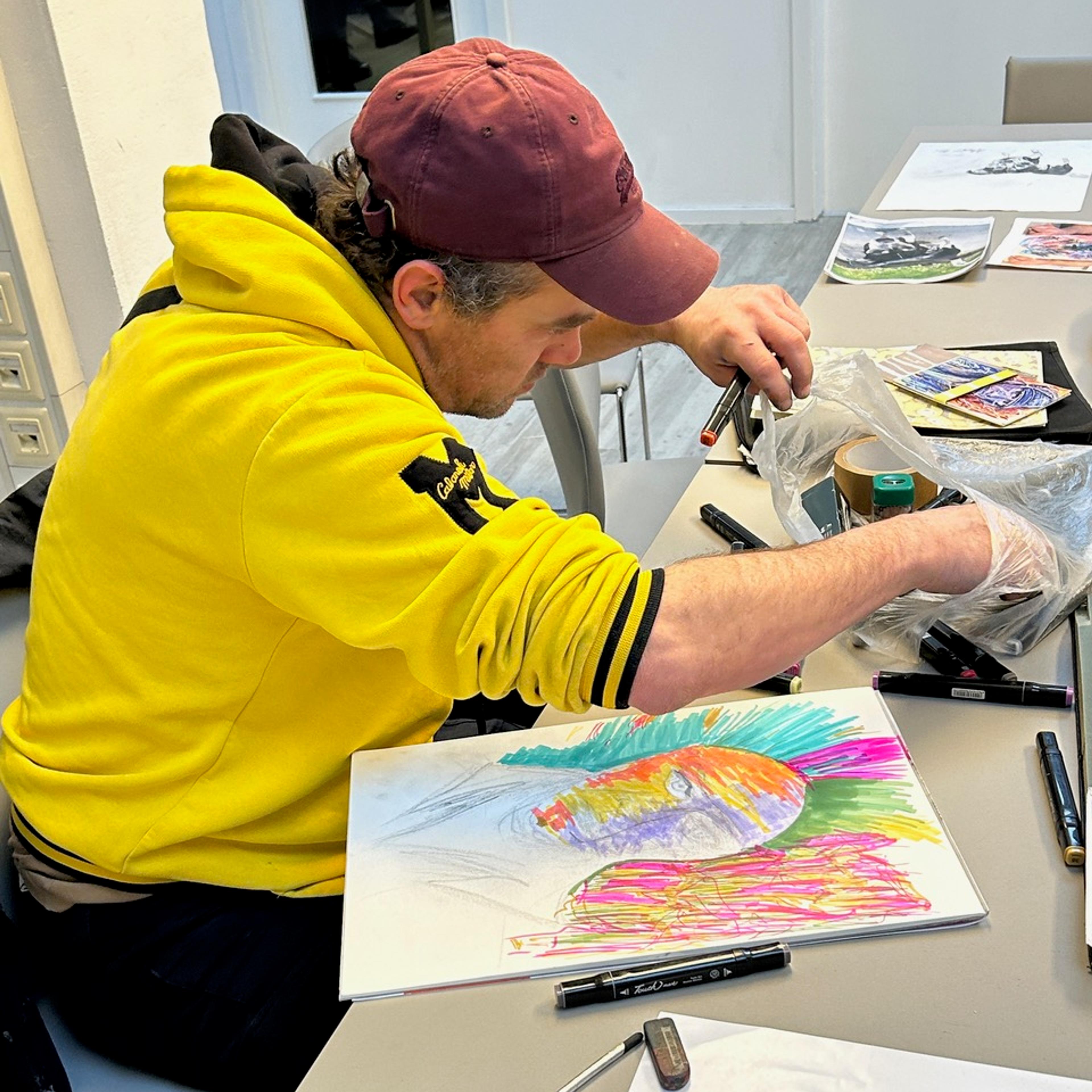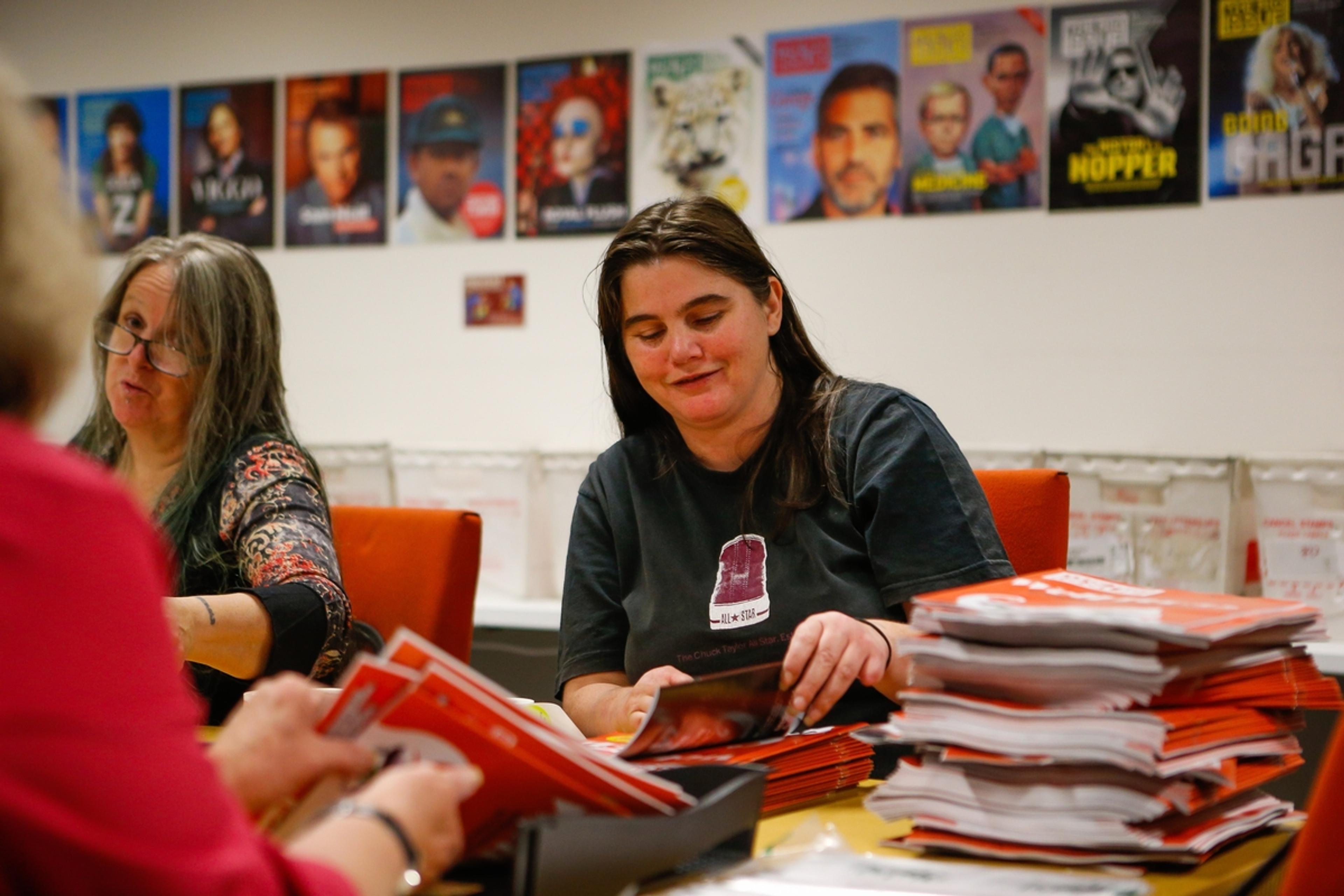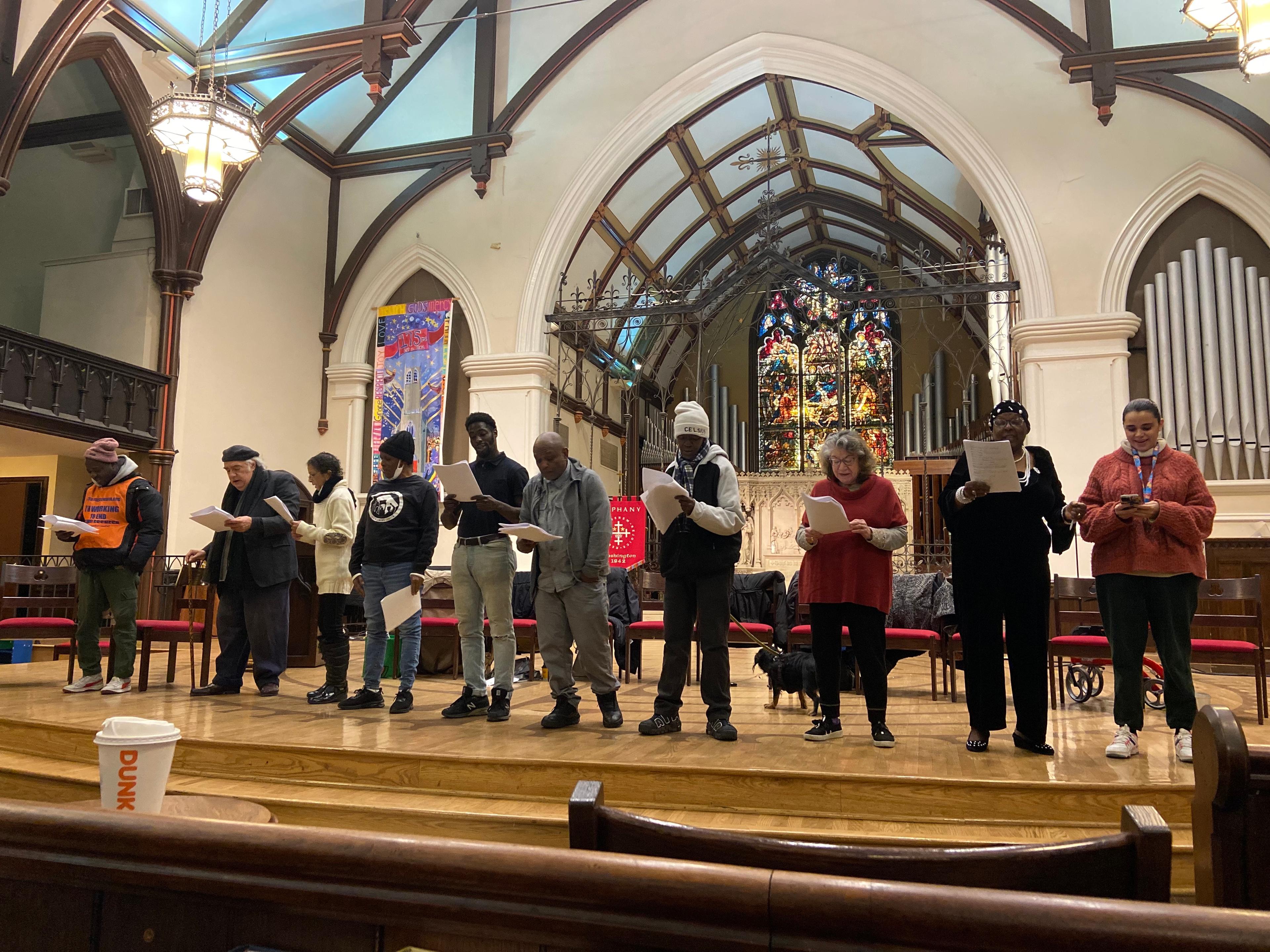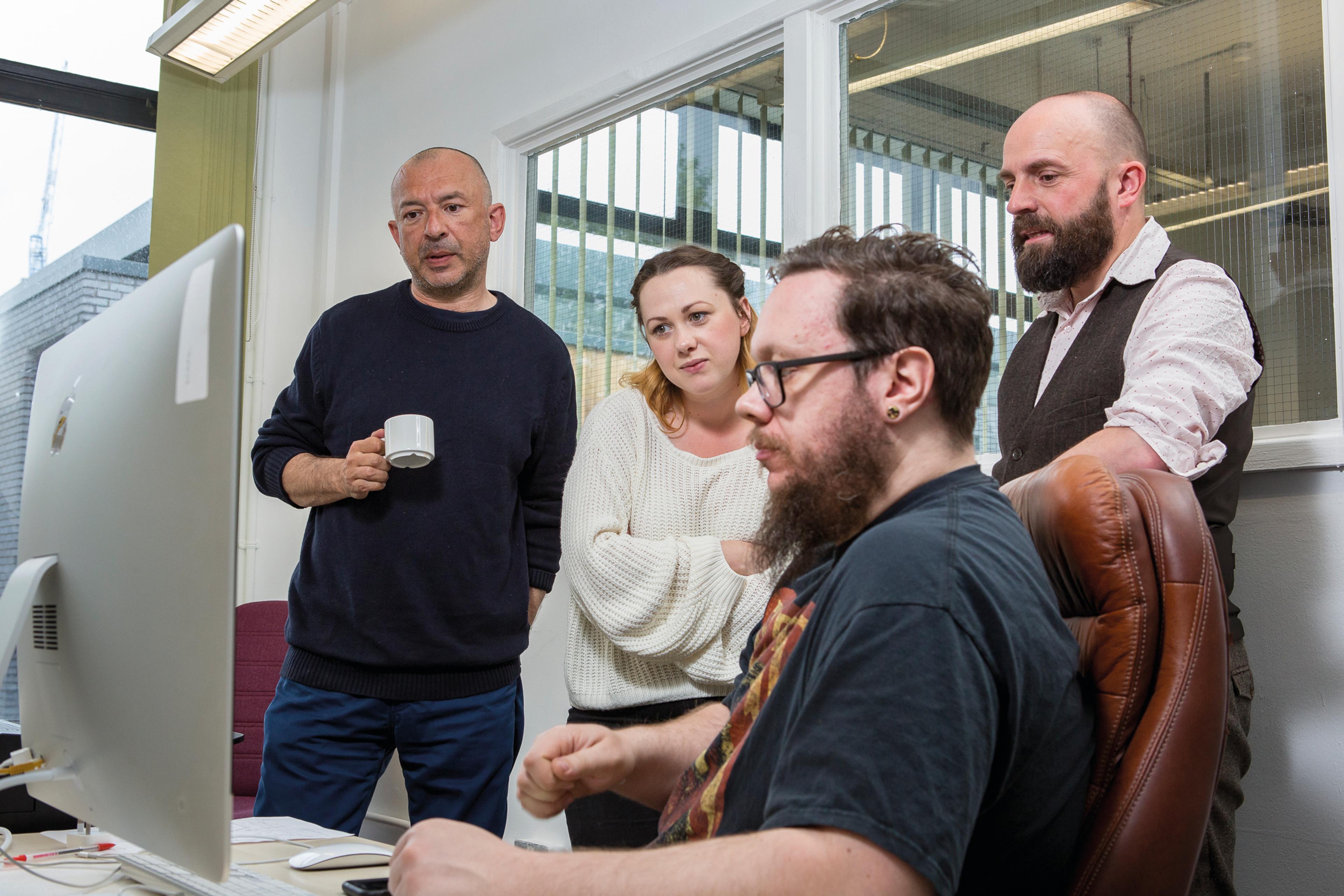Through the Academy of the Street, people experiencing homelessness incorporate their own life stories, which are often viewed as failures by societal standards, into drawings, paintings, photography and texts, transforming experiences such as rejection and discrimination into idiosyncratic, personal and moving works of art, following the tradition of Art Brut (Raw Art).
But the movement is primarily about the joy of creating itself. Professor and academy founder Katharina Mayer quotes the philosopher Arthur Schopenhauer, who theorised artistic activity as “contemplation in the present moment” and as “intention-free wellbeing”.
However, her 64-year-old student Katrin, who has been selling fiftyfifty for 13 years, contradicts this philosophy. “Of course I have an intention when I repeatedly paint watercolour hearts on paper,” she says. “We need more heart in this broken world.” Katrin is the mother of one daughter and grandmother of two, from whom she is estranged.
Fellow student Ralf, 61, presents a lifelike portrait of his last great love, his relationship with whom broke up 11 years ago due to their drug use, among countless other portraits of women. Ralf, who honed his talent for painting during numerous prison sentences for using illegal substance use and driving without a license, combines abstraction and realism in his imaginative paintings. Reflecting on his long history of cocaine consumption, he painted a few white lines on canvas and glued on aluminium foil, in which the drug is usually packaged on the black market.
Outside of the studio, he has also nurtured a small garden on a free piece of land near to the pitch where he sells fiftyfifty. Horticultural has a history stretching long before Tita Giese’s palm trees on traffic islands took Germany by storm, and Ralf knows his stuff. His customers admire the little oasis that he has created through his master craftsmanship. “Art is life,” says Ralf; “pictures are my soul.”
Karin and Helmut, 60 and 62, agree. Both are interested in mandalas. While Helmut delicately paints existing designs, Karin creates new patterns. For Karin, who lost her husband three years ago, painting is a form of meditation. “Painting calms me down; it consoles me over losses in my life. I enjoy painting,” she explains.
Helmut, who has lived on the streets for a long time due to his decades-long addiction, sees things similarly. Like all current academy students, he has finally moved off the streets and in an apartment through fiftyfifty’s Housing First programme. He is habitually deeply affected by depression and also paints at home to survive the long, lonely evenings. “It feels good to accomplish something that can even bring joy to others when they look at it,” he says.
As different as Katrin, Ralf, Karin and Helmut and their works are, they all have one thing in common: their motifs are consistently positive and only explicitly reflect the tragedies that they have experienced to a limited extent, if at all. Nevertheless, art helps them to process serious crises, traumas, losses and social exclusion.
“One day,” says Mayer, “we will present all this unique, raw art to the public in a magnificent exhibition.” Until then, they will keep creating.
Translated from German via Translators Without Borders
Courtesy of fiftyfifty / INSP.ngo






